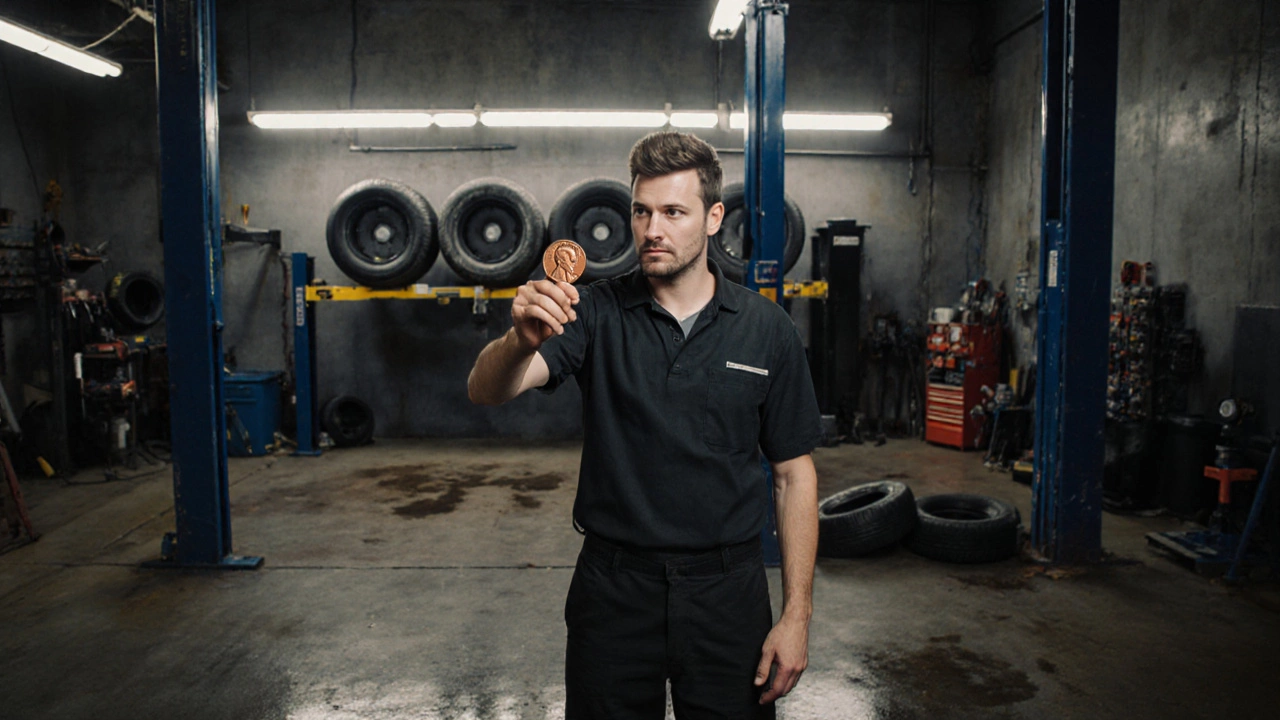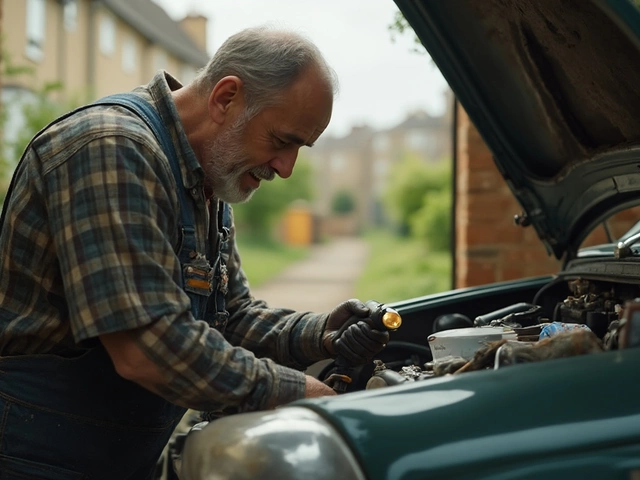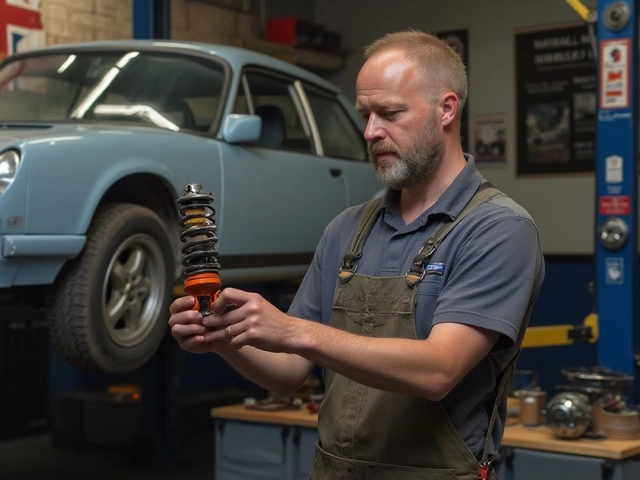Tire Safety Checker
Check Your Tire Safety
This tool helps you determine if you should replace all four tires based on tread depth, age, and vehicle type. Input your tire information to receive a safety recommendation.
Most drivers think replacing all four tires is overkill. Maybe you only see one tire that’s worn out, or maybe the other three still look fine. But here’s the truth: replacing just one or two tires can be more dangerous than driving on bald tires. It’s not about saving money-it’s about keeping you alive.
Why Replacing Just One Tire Is a Bad Idea
Imagine driving on a wet road. One tire has 8/32” tread depth. The other three have 2/32”. When you hit a puddle, the new tire grips like rubber on asphalt. The worn ones hydroplane like ice skates. Your car doesn’t just slide-it spins. That’s not theory. That’s what the National Highway Traffic Safety Administration found in their tire wear studies: mismatched tread depth increases crash risk by 30%.
It’s worse if you drive an AWD or 4WD vehicle. These systems rely on all four tires rotating at the same speed. Even a 2/32” difference in tread can cause the center differential to overheat, burn out, or lock up. Replacing one tire on a Subaru, Audi, or Jeep Grand Cherokee could cost you $3,000 in transmission damage. That’s more than a full set of tires.
When You Can Get Away With Two
There’s one exception: if your other two tires are newer than 50% worn and match the brand, model, and tread pattern exactly, you can replace just the pair on the same axle. But even then, it’s risky. Tires wear differently based on alignment, driving habits, and weight distribution. Front tires on a front-wheel-drive car wear faster. Rear tires on a rear-wheel-drive truck wear slower. So even if two tires look similar, they might not perform the same.
Here’s a real example: A driver replaced two worn front tires on his Honda Civic. Three months later, the rear tires started making a thumping noise. He took it to a shop. The mechanic found the rear tires had 4/32” tread, but the new fronts had 9/32”. The car’s traction control system kept activating on dry pavement because the front tires gripped harder than the rears. The driver didn’t know his car was fighting itself.
Why Replacing All Four Is the Smart Move
Replacing all four tires at once gives you:
- Consistent braking distance across all wheels
- Even handling in turns, rain, and snow
- No stress on your drivetrain
- Full warranty coverage from the tire manufacturer
- Longer life for your suspension and steering parts
Most tire brands require all four tires to be replaced together to honor their treadwear warranty. If you replace only two, you void that protection. That means if one of your new tires fails prematurely, you pay for the replacement yourself.
And here’s something most people don’t think about: tire age. Even if your three tires still have tread, they might be 5-7 years old. Rubber degrades over time. Sunlight, heat, and ozone crack the sidewalls. A 6-year-old tire can fail at highway speeds-even with 6/32” tread. The National Highway Traffic Safety Administration recommends replacing tires after six years, regardless of tread.

How to Check Tire Age and Wear
Look at the sidewall. You’ll see a four-digit number after the DOT code. The first two digits are the week of production. The last two are the year. For example: DOT XXXX 1523 means the tire was made in the 15th week of 2023. That’s over two years old. If you see 0819, it’s six years old. Time to replace it.
Check tread depth with a penny. Put it head-down into the tread groove. If you can see all of Lincoln’s head, you’re below 2/32”. That’s the legal minimum in most states. But safety experts say 4/32” is the real cutoff for wet weather. At 4/32”, stopping distance on wet roads increases by 40% compared to new tires.
What If You Can’t Afford Four New Tires?
If money’s tight, don’t drive on unsafe tires. Instead:
- Check if your local tire shop offers payment plans. Many do-some with 0% interest for 12 months.
- Look for refurbished or certified used tires from reputable shops. Some shops sell tires that were removed from fleet vehicles with 70%+ tread left. They’re inspected, balanced, and come with a warranty.
- Replace the two worst tires first, then rotate the remaining two to the rear. But only do this if the remaining tires are under 5 years old and have more than 5/32” tread.
- Drive slower, avoid heavy rain, and check tire pressure weekly. This reduces stress on weak tires.
But don’t trick yourself. Replacing two tires and hoping for the best is gambling with your safety. Every year, over 11,000 crashes in the U.S. are linked to tire failure. Most of them involve mismatched or worn tires.
What Happens If You Ignore This?
Ignoring tire replacement leads to:
- Longer stopping distances in rain
- Loss of control during emergency swerves
- Increased risk of blowouts at highway speeds
- Damage to your wheels, suspension, and alignment
- Higher insurance premiums if you’re in an accident caused by tire failure
Insurance companies track tire-related claims. If you’ve had one, your rates go up. And if you’re in a crash because your tires were mismatched, your insurer might deny your claim. They’ll say you didn’t maintain your vehicle properly.

When to Replace All Four Tires
Replace all four if:
- Any tire is 6+ years old
- Any tire has less than 4/32” tread
- You drive an AWD or 4WD vehicle
- Two or more tires are worn unevenly
- You live in a place with rain, snow, or ice
Even if three tires look good, if one is bald, the others are likely close behind. Tires wear together. If one failed, the rest are aging at the same rate.
Pro Tip: Buy Tires in Pairs, Replace in Sets
When you buy tires, always get four-even if you only need two. Keep the extra two as spares. Store them in a cool, dark place. They’ll last 5-7 years if protected from sunlight and ozone. When your next set wears out, you’ve already got a matched pair ready to go. No last-minute panic. No rushed buys. No mismatched tires.
Final Answer: Yes, Replace All Four
Unless your other three tires are brand new, under 2 years old, and have identical tread depth, you should replace all four. It’s not about being extra. It’s about being smart. One tire failure can end your life-or someone else’s. The cost of four tires is a fraction of a hospital bill, a tow truck, or a lawsuit. Don’t wait until it’s too late.
Can I replace only two tires if the other two are new?
No. Even if the other two tires look new, they may have different tread patterns, wear rates, or age. Tires degrade over time, even if unused. For safety and performance, always replace all four at once unless all existing tires are identical in brand, model, age, and tread depth.
Is it okay to replace three tires?
Replacing three tires is better than replacing one or two, but it’s still not ideal. The new tire will have different grip and rolling resistance than the older one. This can confuse your car’s stability control system and cause uneven wear. It’s better to replace all four to ensure consistent performance.
Do I need to replace tires if they still have tread?
Yes. Tires older than six years can crack and fail even with good tread. Rubber breaks down from heat, sunlight, and ozone. Check the DOT code on the sidewall. If the tire is six years or older, replace it-even if it looks fine.
Can I mix different tire brands?
Never mix brands on the same axle. Different rubber compounds, tread patterns, and sidewall stiffness affect handling and braking. Even if two tires look similar, they may behave differently in wet or icy conditions. Always use the same brand and model on all four wheels.
How much does it cost to replace four tires?
The average cost is $600-$1,200 for four mid-range tires, including installation and balancing. Budget tires start around $400. Premium tires for SUVs or performance cars can go up to $2,000. Many shops offer financing, and some manufacturers run rebates in the fall.
If you’re unsure about your tire condition, visit a trusted shop. Most offer free inspections. Don’t guess. Don’t delay. Your tires are the only thing keeping you connected to the road.






